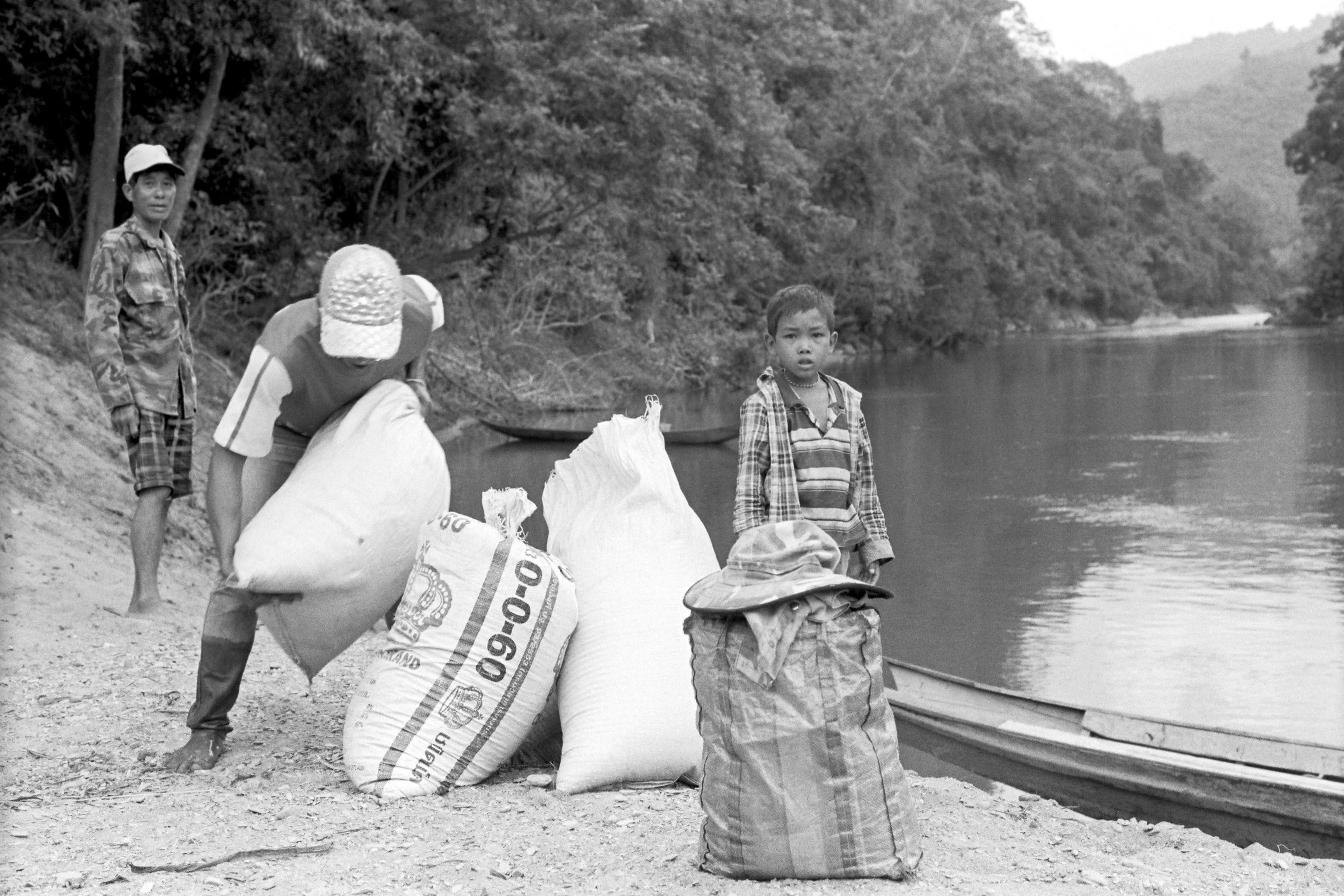
Damming the Nam Tha in Northern Laos
The transformation of a river, and community, before and after dam construction begins in earnest.
By Scott Ezell
June 18, 2016 TD
The Nam Tha, or Tha River, begins in northern Laos near the Lao-China border and runs southwest to join the Mekong just south of Huay Xay on the Lao-Thai border. In October 2014, I traveled by motorcycle and longtail boat up the Nam Tha, starting from its mouth at Pak Tha, to investigate a dam project on the river. Work on the dam’s access roads and other infrastructure had been underway for months, but no signs of construction were visible as I traveled—the banks were thickly forested, interspersed with patches of swidden agriculture, with occasional thatch villages where I stayed along the way.
The Nam Tha dam is being built by a subsidiary of the China Southern Power Grid, and 95 percent of the electricity it generates will be sold to Thailand. Scheduled to be completed in 2017, the dam will displace over 10,000 ethnic Lao and minority peoples, and during my visit the village Ban Hadmuark was being enlarged into a resettlement town for displaced villagers. (For details on the demographic impacts of the dam, see Olivier Evrard’s article “The Silenced River.”)
In February 2016 I returned to the Nam Tha to document the progress of the dam. This time I hitchhiked with a work truck driving in on the 37 kilometer access road from National Highway 3. I was stunned to discover that this stretch of the river had been transformed into a vast industrial plain, razed flat and crowded with cement trucks, lorries, earth movers, turbine parts, and scrap metal.
This photo essay starts with the Nam Tha as I experienced it in 2014, then switches to the way I encountered it in 2016. However, these images don’t convey the sense of violence that struck me when I entered the dam site a year and a half after seeing it in a nearly pristine state—the machinery, noise, ravaged hillsides, and clouds of dust raised up by gravel crushers, seemed limitless, on a scale to dwarf human individuals, communities, and aspiration.
Still, I hope these images serve in a small way to express the experience of peoples who have no voice or agency in the face of changes imposed upon them by international corporate interests and by their own governmental elite. Any form of protest can lead to police abduction and disappearance for Lao nationals in Laos—therefore, along with the advocacy of NGOs like International Rivers, this type of documentation may currently be one of the only means of dissent against hegemonic “development” which uproots and disenfranchises many for the benefit of a privileged, autocratic few.
Thanks to my friend Preedawan for serving as my guide and translator on the Nam Tha in 2014.
Scott Ezell is an American poet and multi-genre artist with a background in China and Southeast Asia.

No comments:
Post a Comment